

Sections
Highlight

Throne-bearers running down the steep streets, apostles in masks and the burning of a large, doll-like figure. These are three of the customs that form part of the traditions and customs celebrated in inland Malaga during Holy Week, and not all are that holy. Although some have lapsed in recent years, such as the pilgrimage of La Pava in Benamocarra, there are still many that survive, either because of their originality or because of the effort made by many locals to maintain their identity through such festivities.
1
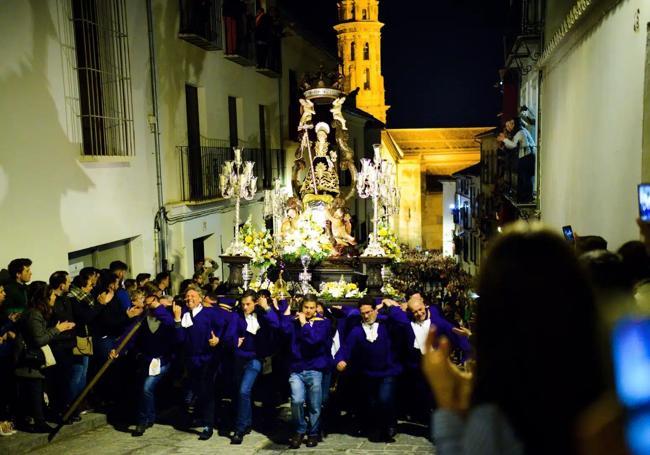
It is one of the traditions that draws most attention with first-time visitors to the town of Antequera during Holy Week. This curious custom, which takes place on both nights of Holy (or Maundy) Thursday and Good Friday, is curious for the simple fact that the holy images, mounted on their thrones, are carried at speed up the town's very steep slopes to cries of '¡A la vega!' ('to the plains!'). It seems that the origin of this atypical and exclusive tradition of Antequera's Holy Week comes from a very old custom that consisted of taking their religious images to the highest part of the town so that they could bless the fertile plains surrounding Antequera. To be precise, this 'vega' run is done by the religious brotherhoods at the end of each procession scheduled for these two days, with the exception of the Soledad procession. Tradition demands that each procession begins with the ringing of a bell.
2
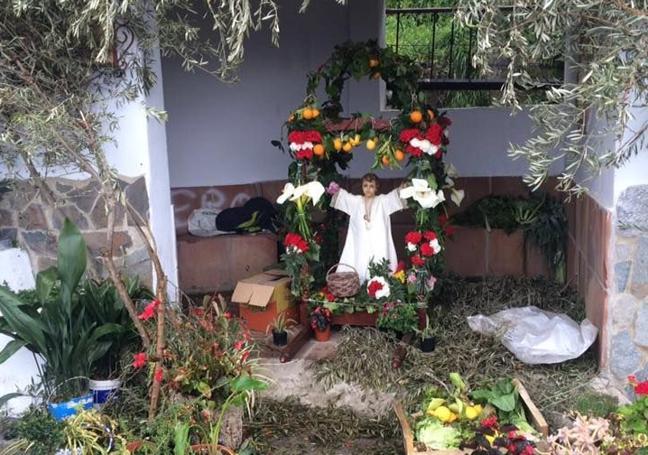
Worshipping the baby Jesus at Easter may seem strange, but it is a custom that is part of Easter Sunday in many villages in Malaga province, especially in the Serrania de Ronda. This takes place on Easter Sunday in villages such as Atajate, Cartajima, Alpandeire, Benarrabá, Benaoján, Parauta, Genalguacil and Júzcar, among others. It is customary for the villagers to go out in the early hours of the morning before the fiesta to gather plants, tree branches and vegetables to create a small shack, a temporary shrine, in the village. Inside the now-decorated shack an image of the baby Jesus is placed, having been previously removed from the village church. This is what is known in many of these places as the Huerto del Niño. This is usually followed by an encounter with an image of the Virgin Mary with a backdrop of the Resurrection to inspire hope. There are also some places in La Axarquía, on the Costa del Sol (Benahavís) and in Huelva province that maintain this curious custom on the last day of Holy Week.
3
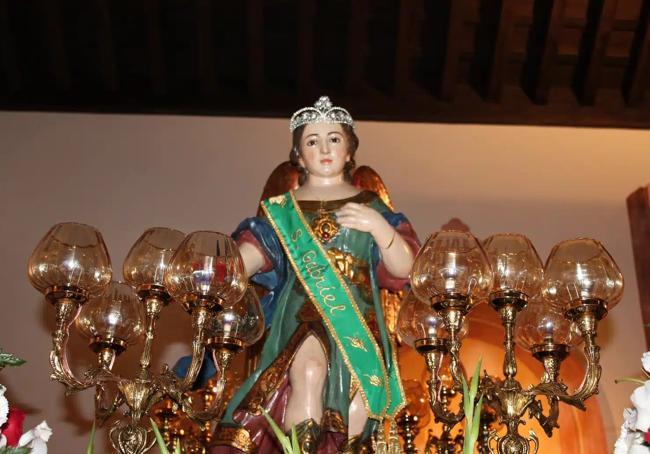
If Iznate can boast about kicking off Semana Santa with its patron saint fiestas, El Borge can boast about ending it in style with its own festivities in honour of Saint Gabriel, or San 'Grabié', as many Borgeños say. It runs from Easter Saturday to Easter Monday (a local holiday). It is customary for the patron saint to be taken out in a procession up to three times with the Virgen del Rosario during these three days, always just after midnight. Although it is the culmination of a week of great religious passion, both Easter Sunday and Easter Monday (a public holiday in the village) can be experienced in a more lighthearted and relaxed atmosphere. Even the processions take on a festive and fun vibe on the Sunday.
4
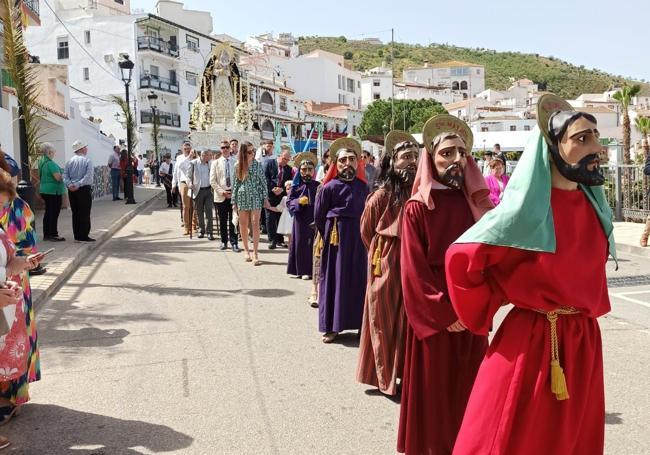
They begin Holy Week with the patron saint festivities of the Virgen de los Dolores and end it with a very unique tradition in this part of Malaga province. Iznate can boast one of the most original passion weeks in the province, thanks to customs such as the one you will see this Easter Sunday. In the morning, after mass, a procession takes place bearing the image of the patron saint to the Santo Cristo chapel. Next to this chapel is where a very peculiar, live performance takes place. Some of the villagers don very old tunics and masks representing the apostles and they search for the image of the baby Jesus, which was hidden among the plants on the previous day. After this scene, fireworks are set off and the fiesta begins in which locals and visitors share a popular paella.
5
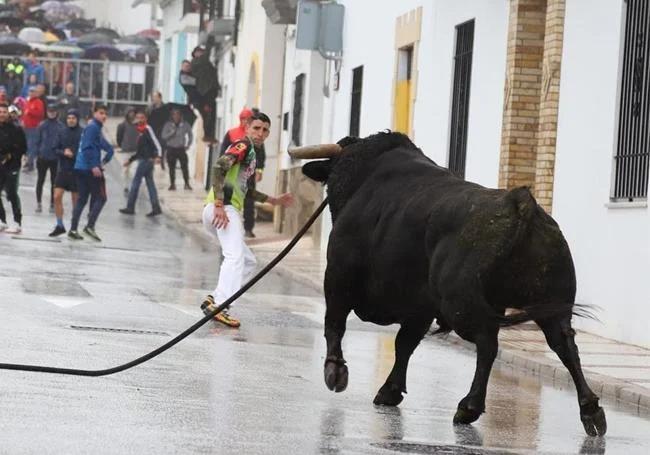
In the Malaga village of Gaucín, the final touch to Semana Santa is a tradition that has little to do with religion. It is known as the 'toro de cuerda'. This event basically consists of taking a bull tied by the horns through the streets of the village. Along the route taken by the bull, villagers and visitors alike can make their passes and their poses, feign a charge and run at the bull without risk to themselves as the animal will be tied by its horns at all times. After this run through the streets of Gaucín a lifesize figure dressed in rags is placed in front of the bull to taunt it to charge. It is also customary that, after the release of each bull, the animal is auctioned off to the highest bidder for its subsequent slaughter and consumption by some of the villagers. This event is regulated under article 91.e of the R.D. 145/1996, Reglamento de Espectáculos Taurinos (Regulations of Bullfighting Shows), and the municipal regulations of 21 March 1997.
6
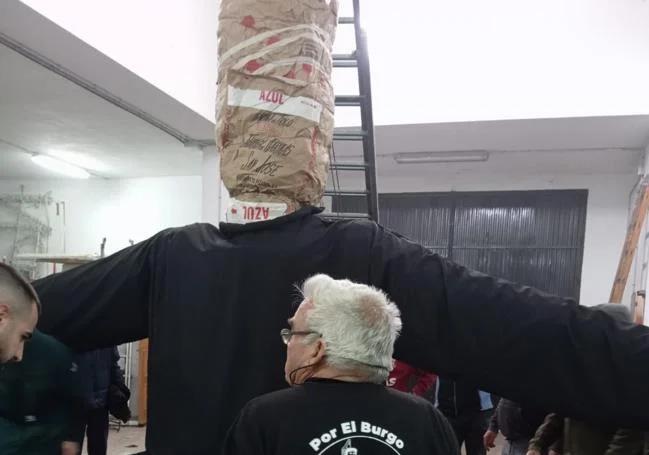
Although this event has religious origins, the burning of a large doll symbolising evil has pagan connotations. It is one of the traditions preserved with pride in the village of El Burgo. There it is known as the Quema del Judas, the same as in some villages in northern Spain. In fact, it was a Basque priest who established this tradition more than seven decades ago in the village when he was the parish priest. The large figurine, six metres high, will be made out of rags and will again be inspired by present-day events to give it a different form every year. Usually it will be a real character or person, so they will probably have no problem finding a good candidate. On the morning of Easter Sunday it will be set on fire while a whole host of loud fireworks and other pyrotechnics will be heard across the village.
7
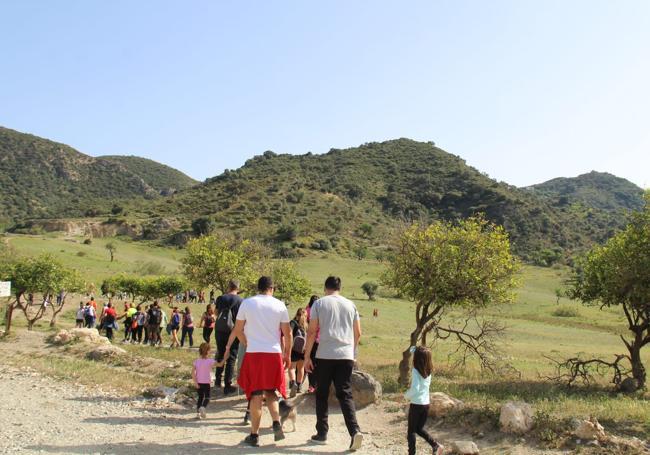
There are traditions that stand the test of time, albeit somewhat adapted to modern times. This is the case for the preparation and eating of a snack that is known as 'jornazo' (or hornazo), a bread with a hard-boiled egg inside that is made to be eaten on the afternoon of Easter Sunday in Cártama. It used to be made at home and then, on the afternoon of the last day of Holy Week, families would head out to the nearby countryside to eat them with friends. Nowadays, the 'jornazo' is made in bakeries in the village and Cártama council organises a walk that requires prior registration so every participant is guaranteed their 'hornazo'. In other villages in Malaga hornazos are also made, but they are eaten during pilgrimages such as that of San Marcos.
Other special customs during Holy Week in inland Malaga are the procession of the Virgin of Loreto in Ronda (Easter Sunday), the procession of the Holy Burial in Arriate (Easter Saturday), La Despedía in Álora (Good Friday), the Blessing of the Poor in Vélez-Málaga (Maundy Thursday), the meeting of the three images of the Huerto brotherhood in Plaza Ochavada in Archidona (Holy Wednesday), the procession of Silence in Ronda (Holy Wednesday) or the different live events and parades in towns such as Alhaurín El Grande, Benalmádena, Carratraca, Cajiz (Vélez-Málaga), Riogordo, Casarabonela and Igualeja, among many others.
Publicidad
Publicidad
Publicidad
Publicidad
Esta funcionalidad es exclusiva para registrados.
Reporta un error en esta noticia

Debido a un error no hemos podido dar de alta tu suscripción.
Por favor, ponte en contacto con Atención al Cliente.

¡Bienvenido a SURINENGLISH!

Tu suscripción con Google se ha realizado correctamente, pero ya tenías otra suscripción activa en SURINENGLISH.
Déjanos tus datos y nos pondremos en contacto contigo para analizar tu caso

¡Tu suscripción con Google se ha realizado correctamente!
La compra se ha asociado al siguiente email
Comentar es una ventaja exclusiva para registrados
¿Ya eres registrado?
Inicia sesiónNecesitas ser suscriptor para poder votar.